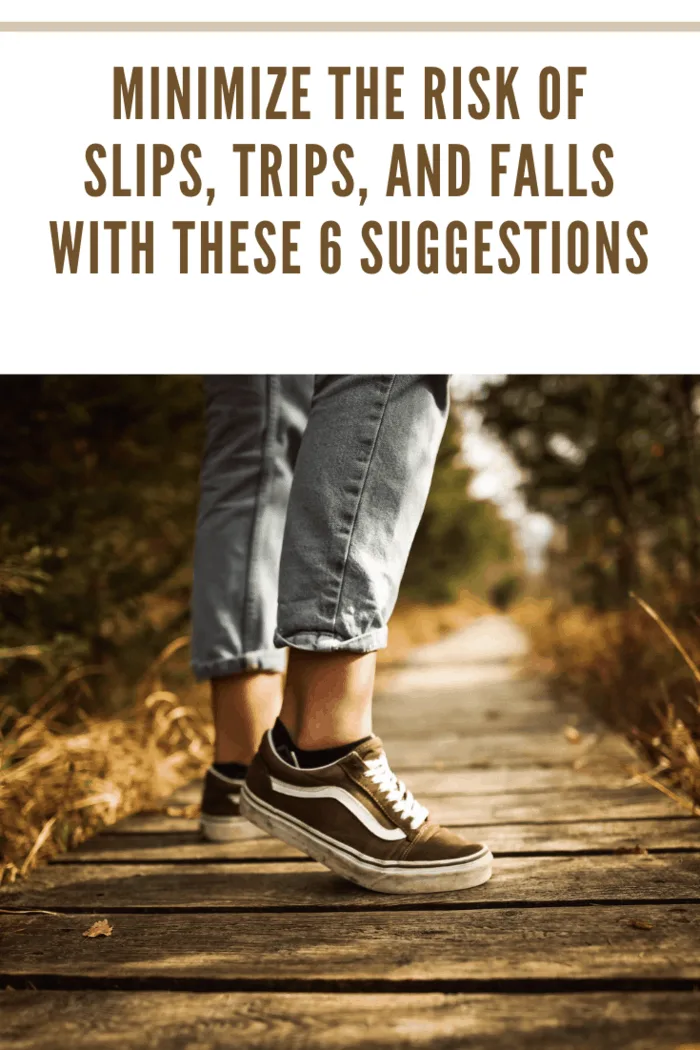Slips, trips, and falls can happen anywhere – at home, in the workplace, or at a business establishment. Although these accidents may seem harmless (or even elicit a laugh from bystanders), they’re a common hazard with serious consequences.
A report from the National Safety Council revealed that about 9 million individuals had undergone treatment in emergency rooms due to fall-related injuries (Injury Facts). However, you can take measures to minimize the potential hazards that can result in slips, trips, and falls and make the environment safer for everyone.
Keep these safety suggestions in mind:

1. Fix Uneven Walking Surfaces
An uneven pathway is a disaster just waiting to happen. It still threatens people even if you rope off or post a “caution” sign in the area.
When you realize that a particular area is a risk for a fall or trip, take measures to get it repaired, even if it’s a low-traffic spot. One suggestion is to add urethane coating to concrete flooring systems. Doing so will make the surface smooth and seamless.
2. Keep the Floors Dry and Clean
Spills are a slipping hazard. If you see one on the floor, clean them up as soon as possible. After mopping the floor, make sure to put a “wet floor” signage. Then, remove the sign once the floor dries.
If outside water is seeping inside the building, consider installing moisture-absorbing mats and laying down the anti-skid adhesive tape. These materials keep the floor dry and offer additional traction on slippery surfaces.
3. Get Rid of Obstacles from Floors
Regardless of how insignificant it may look, any object is a trip hazard. Cables, boxes, and everyday clutter can easily turn into an obstacle on floors, around corners, and on stairways.
Take the initiative to remove any obstacle you see on the floor. You could do the following to keep the pathways free from clutter:
Run phone, power, and internet cords under carpets or behind walls. You can also avoid running cables across pathways by installing phone jacks, internet connections, and power outlets in easily accessible areas.
Pick up boxes, files, and other office stuff lying in walkways and place them on their respective workstations.
Close drawers and doors when not in use.
4. Wear Proper Footwear
Whether you’re in a construction site, a car service center, or an office, proper footwear is vital to preventing accidents. For instance, companies in the oil, mining, and heavy metal sector require workers to put on safety shoes or some other specialized footwear before entering the worksite.
Even if the business doesn’t require safety shoes, you should still think about footwear. Your shoes should have a non-slip feature and give you plenty of traction. If you find that the heels are worn, fix them, or get a new pair.
5. Keep the Area Well-Lit
Poor lighting prevents people from clearly seeing what’s in front of them. This makes slips, trips, and falls more likely to occur. If you’re on a construction site or a facility, make sure that every part of the workplace is properly illuminated during work hours. This includes all pathways, dock areas, basements, stairs, ramps, and hallways.
Also, ensure you find and turn on the light switch before exploring a dark room. If necessary, report any defective bulbs and light fixtures for repair or replacement.
6. Use the Appropriate Climbing Tools
Don’t use an unstable chair or table if you need to reach something from a high area. Instead, opt for an accessible ladder or wooden step stool. The right climbing tool can minimize the chances of a nasty fall.
These safety tips will minimize the risk of sustaining injury due to slips, trips, and falls. Proactive attention to hazards will keep you and everyone else safe and out of harm’s way.
